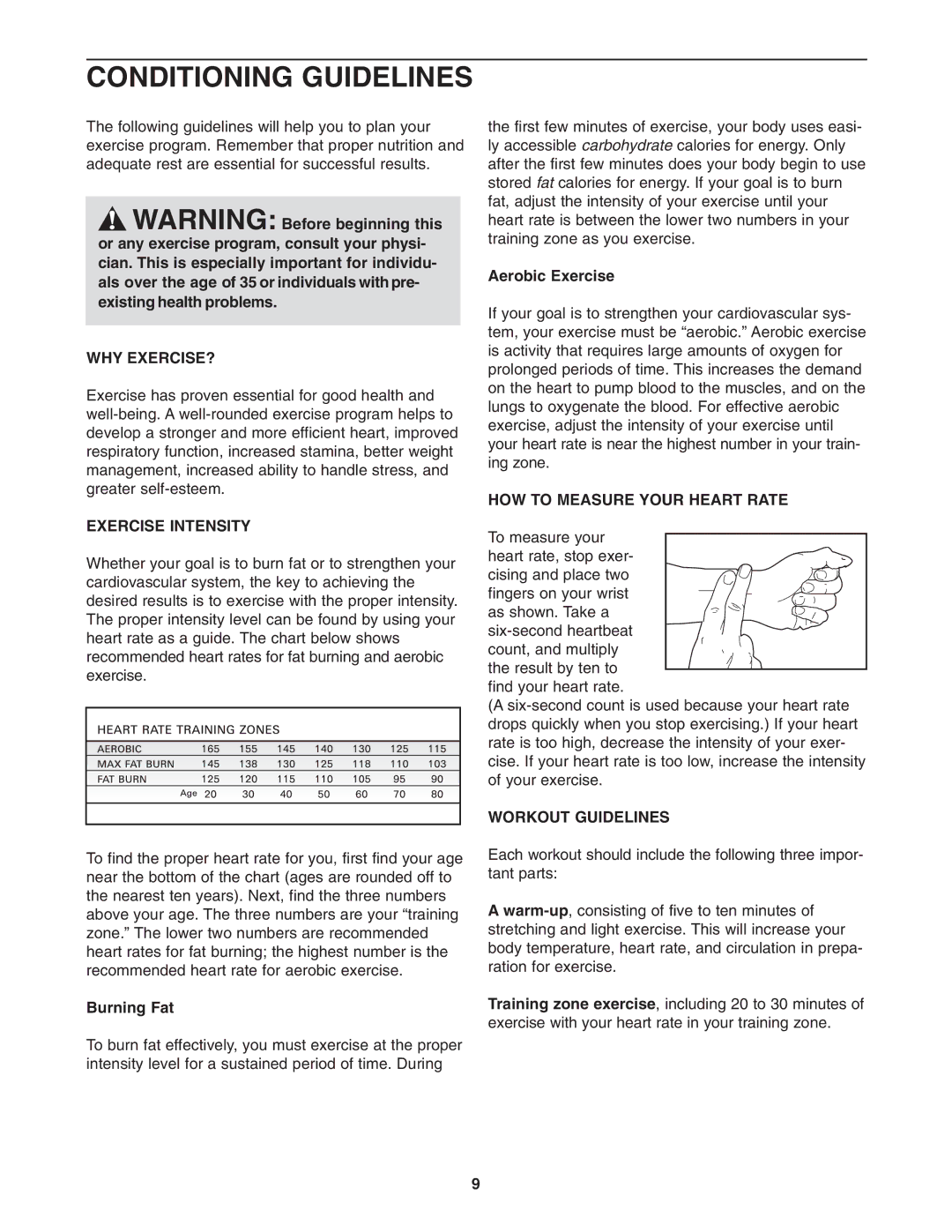
CONDITIONING GUIDELINES
The following guidelines will help you to plan your exercise program. Remember that proper nutrition and adequate rest are essential for successful results.
![]() WARNING: Before beginning this or any exercise program, consult your physi- cian. This is especially important for individu- als over the age of 35 or individuals withpre- existing health problems.
WARNING: Before beginning this or any exercise program, consult your physi- cian. This is especially important for individu- als over the age of 35 or individuals withpre- existing health problems.
WHY EXERCISE?
Exercise has proven essential for good health and
EXERCISE INTENSITY
Whether your goal is to burn fat or to strengthen your cardiovascular system, the key to achieving the desired results is to exercise with the proper intensity. The proper intensity level can be found by using your heart rate as a guide. The chart below shows recommended heart rates for fat burning and aerobic exercise.
To find the proper heart rate for you, first find your age near the bottom of the chart (ages are rounded off to the nearest ten years). Next, find the three numbers above your age. The three numbers are your “training zone.” The lower two numbers are recommended heart rates for fat burning; the highest number is the recommended heart rate for aerobic exercise.
Burning Fat
To burn fat effectively, you must exercise at the proper intensity level for a sustained period of time. During
the first few minutes of exercise, your body uses easi- ly accessible carbohydrate calories for energy. Only after the first few minutes does your body begin to use stored fat calories for energy. If your goal is to burn fat, adjust the intensity of your exercise until your heart rate is between the lower two numbers in your training zone as you exercise.
Aerobic Exercise
If your goal is to strengthen your cardiovascular sys- tem, your exercise must be “aerobic.” Aerobic exercise is activity that requires large amounts of oxygen for prolonged periods of time. This increases the demand on the heart to pump blood to the muscles, and on the lungs to oxygenate the blood. For effective aerobic exercise, adjust the intensity of your exercise until your heart rate is near the highest number in your train- ing zone.
HOW TO MEASURE YOUR HEART RATE
To measure your
heart rate, stop exer- cising and place two fingers on your wrist as shown. Take a
count, and multiply the result by ten to find your heart rate.
(A
WORKOUT GUIDELINES
Each workout should include the following three impor- tant parts:
A
Training zone exercise, including 20 to 30 minutes of exercise with your heart rate in your training zone.
9
